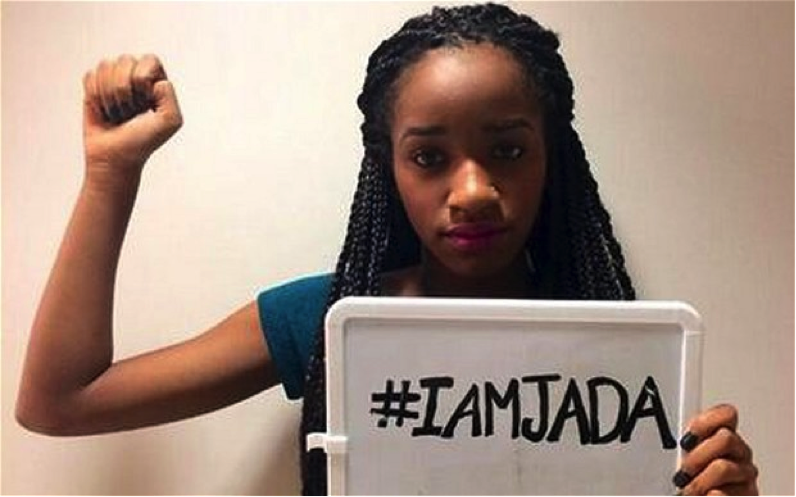By Kimberly Lim, Change Maker
According to the Pew Research Center, 73% of adults had witnessed some form of cyber harassment in 2014 alone. Widespread cyber harassment has prompted individuals like Monica Lewinsky to commit themselves to ending cyber bullying. However, the issue of cyber harassment is multifaceted and women are disproportionately the victims of cyber-harassment.
1. Stalking
Perhaps one of the most well-known forms of cyber harassment is stalking. Today, personal information like email addresses and photographs is easily accessible online. It is also possible to obtain private information illegally through hacking, as seen from the recent leak of nude celebrity photographs on the imageboard 4chan. But more than often, it is not celebrities, but ordinary people who are targeted—one of the most famous cases is that of Randi Barber in the 1990s, whose stalker revealed her home address on sex chat lines and online advertisements, putting her in danger. Such stories are no longer uncommon in today’s context, as seen from movies like “Cyber Stalker”, where protagonist Aiden Ashley’s online stalker broke into her home.
2. Slut-shaming
 Increasingly, the proliferation of social media and the ability to hide behind anonymity have fuelled malicious attacks on individuals perceived as sexually promiscuous. In 2013, the hashtag #slanegirl was particularly infamous, as Twitter users collectively denounced a girl caught performing oral sex at a concert venue, with some even going to the extent of publishing her full name and age on online public spaces. More recently, schools in USA are facing protests after humiliating students who were perceived to be inappropriately dressed by forcing them to wear loose fitting “shame suits”. Such behavior, however, irresponsibly perpetuates the damaging outlook that victims are responsible for their own plight, while removing responsibility from perpetrators.
Increasingly, the proliferation of social media and the ability to hide behind anonymity have fuelled malicious attacks on individuals perceived as sexually promiscuous. In 2013, the hashtag #slanegirl was particularly infamous, as Twitter users collectively denounced a girl caught performing oral sex at a concert venue, with some even going to the extent of publishing her full name and age on online public spaces. More recently, schools in USA are facing protests after humiliating students who were perceived to be inappropriately dressed by forcing them to wear loose fitting “shame suits”. Such behavior, however, irresponsibly perpetuates the damaging outlook that victims are responsible for their own plight, while removing responsibility from perpetrators.
3. Revenge “Porn”
The non-consensual distribution of sexual images has also become worryingly common. This usually occurs after a breakup, where intimate pictures or videos are posted as a form of retaliation. According to the Cyber Civil Rights Initiative, 1 in 10 have threatened to post explicit material implicating their former partners, while 93% of victims have undergone extreme emotional distress. Only recently have lawmakers begun to formulate specific legislation tackling revenge porn; under California’s new anti-revenge porn laws, Noe Iniguez was the first to be sentenced in December 2014.
4. Rape Videos
 The glorification of rape has also, unfortunately, emerged as part of the culture of violence online. Underscoring the popular hashtag #Jadapose is the cruel mockery of 16 year old Jada, whose rapists posted pictures of her online. In Russia, with intolerance towards the LGBT community on the rise, videos featuring vigilantes humiliating and physically hurting homosexuals have become widespread as well.
The glorification of rape has also, unfortunately, emerged as part of the culture of violence online. Underscoring the popular hashtag #Jadapose is the cruel mockery of 16 year old Jada, whose rapists posted pictures of her online. In Russia, with intolerance towards the LGBT community on the rise, videos featuring vigilantes humiliating and physically hurting homosexuals have become widespread as well.
Underscoring all forms of cyber harassment is the common theme of violence, lack of empathy and the erosion of human dignity. In Singapore, we have recently proposed new anti-harassment laws, encompassed in the Protection from Harassment Act. However, the extent to which legislation can combat entrenched anti-social behaviour remains to be fully seen. Nonetheless, we can remain optimistic that with recognition from the law that cyber harassment is undesirable, social paradigms may likewise shift in a more positive direction as well.
About the Author:
Kimberly is a recent junior college graduate. She has a fascination for history and an unhealthy obsession over fluffy things. Currently, she is enjoying her life after the A Levels and is trying her hand at felt knitting, constantly leaving traces of wool in her wake, much to the chagrin to her friends and family.